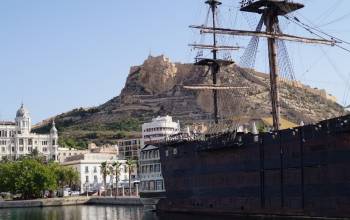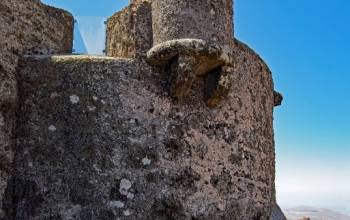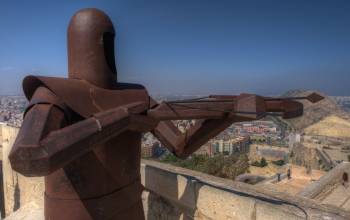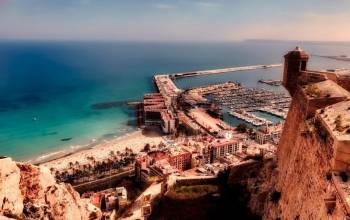The golden castle on the tip of the Moor's face
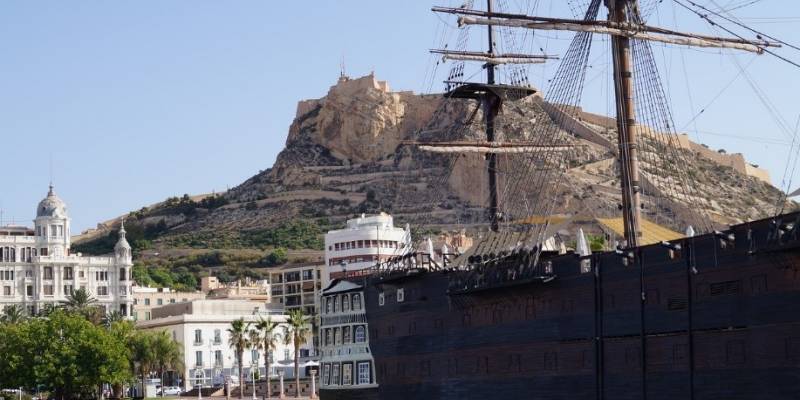
Alicante's dominant feature is the majestic golden castle, 166 metres above sea level, which overlooks the harbour. It is a magnificent, well-preserved medieval fortress on the top of Mount Benacantil. The building itself shows a slight inspiration from Arabic culture, which corresponds to the supposed period of its construction sometime in the 9th century, when Arab influence still lingered in Spain. The top of the mountain is not only the castle itself, but also the adjacent churches, dungeons or terraces with moats and fortifications.
The castle has a rich history and has witnessed many historical milestones that have shaped its appearance to what we know today. On the feast of Saint Barbara on 4 December 1248, the gates of the castle succumbed to the forces of Alfonso XI of Castile, who renamed the fortress Castillo De Santa Bárbara, or Saint Barbara's Castle, in honour of this event.
The very top of the mountain is where you can best enjoy the view of the sea, the harbour and the city. In this area you will find the oldest of the later buildings, such as the governor's house or the old hospital. There is also an inconspicuous café with small refreshments. On the lower level you will find buildings dating back to the 16th century. There are the ruins of St Barbara's Church, Felipe II's salon and a barracks with a platform for soldiers. The last and lowest level of the complex is from the 18th century. It was mainly defensive, so apart from the dungeons you will find mainly fortifications with massive cannons. It's the highest point you can go by car. There is a small car park for this purpose and also a lift stop, which you can take to the top of the mountain. However, it is much easier to leave your car in the parking lots in town, where there are always plenty of spaces, and take the elevator directly from the base of the mountain.
A testimony of unfulfilled love
Some may notice that the mountain on which the castle is built looks remarkably like a man's face from the beach. Supposedly, this is no coincidence. It is said that a princess lived in the castle and fell in love with a Moor. Her father disapproved of this love and forbade her to see, let alone marry, the man. The young princess could not bear to be separated from her lover and in despair jumped down from the castle fortifications. As soon as the Moor found out, he climbed the castle walls and rushed after her. From then on, we can see his tortured face in the mountain at the very spot where they both perished.
What's good to know
It is easy to reach the top on foot by one of the many paths. Each of them is equipped with rest stops, should you run out of energy in the warmer months. Entrance to the grounds is, of course, free. The only thing you have to pay for is the use of the lift. A two-way ticket can be bought from the machine at the entrance. The price is EUR 2.70. The opening hours of the complex are from 10 a.m. to 10 p.m. The lifts run from 10.00 and end with the last ride up at 19.20 and the last ride down at 19.40. The complex also houses an exhibition centre and a museum depicting the history of the town and the castle itself.
After dark...
The Golden Castle is intrinsically linked to the city of Alicante and is therefore often the centre of various cultural performances. During the summer months, the city council organises concerts under the stars in the castle courtyard. The shows are usually held on Fridays and Saturdays after 10pm. If you're in town at that time, don't miss a visit. You'll see a generally low-key performance with the monumentally lit complex in the background, and it's easy to soak up a bit of that local atmosphere.
Where is the castle located?
Alicante is the name of both the city and the entire province, which consists of 10 districts and is the smallest and southernmost province of the Commonwealth of Valencia, formerly known only as Valencia. It is one of the 17 autonomous communities of Spain, whose name is derived from the most important metropolis of the region, which is Valencia.






